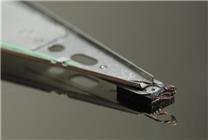BMW and E.ON Partner to Launch Germany’s First Commercial Vehicle-to-Grid Solution
Key Highlights:
- BMW teams up with E.ON to introduce a groundbreaking V2G solution for individual users in Germany.
- Electric vehicles (EVs) can now contribute to grid stability while providing financial rewards to owners.
- Users may earn up to €720 annually without compromising battery life, enabling free travel for up to 14,000 kilometers.
On September 9, BMW Germany announced a strategic partnership with E.ON, marking a significant milestone in the electric vehicle (EV) ecosystem. This collaboration has led to the launch of Germany’s first commercial Vehicle-to-Grid (V2G) solution tailored for individual customers. As the world advances towards sustainable energy solutions, this initiative integrates EVs into the energy grid, thereby enhancing grid stability and offering monetary rewards for EV owners.
Understanding Vehicle-to-Grid (V2G) Technology
The V2G technology allows electric vehicles to function as mobile energy storage units that can feed electricity back to the grid. This innovation plays a crucial role in balancing the fluctuating energy supply and demand. By employing this technology, vehicle owners can actively participate in energy management, ensuring a more reliable and efficient grid while reaping financial benefits.
Financial Incentives for Electric Vehicle Owners
Participants in this innovative program can earn up to €720 annually through the V2G solution, which does not compromise the lifespan or performance of their vehicle batteries. This incentive could effectively subsidize the cost of vehicle ownership, making electric transportation not only environmentally friendly but also economically advantageous.
In practical terms, the revenue generated through this program can equate to the ability to travel approximately 14,000 kilometers per year at no additional cost. This aspect alone makes the V2G solution an appealing option for current and prospective electric vehicle owners.
Compatibility and Future Prospects
For users to benefit from the V2G system, compatibility with specific BMW models, such as the BMW iX3, is essential. This two-way charging capability allows vehicles to discharge power back into the grid, showcasing the evolving relationship between electric mobility and the energy market.
Looking ahead, this initiative exemplifies a shift in how we approach energy consumption and distribution. With the increasing adoption of electric vehicles globally, the alignment between automotive manufacturers and energy providers is vital. It paves the way for enhanced sustainability and efficiency in energy use, contributing positively to the ongoing discourse surrounding climate change and renewable energy.
Conclusion
The partnership between BMW and E.ON represents a forward-thinking solution in the realm of electric mobility and energy management. By effectively integrating electric vehicles into the grid, this V2G technology fosters a new level of energy interaction, encouraging users to engage more holistically with their energy sources. This innovative approach is a crucial step toward building a sustainable future, where individual actions can contribute significantly to broader energy goals.
As we continue to advance towards more sustainable technologies, initiatives like this will play a foundational role in shaping a greener and more resilient energy ecosystem. Vehicle owners now have a compelling reason to consider electric vehicles, not only for their environmental benefits but also for the potential financial returns they offer through intelligent energy management solutions.





